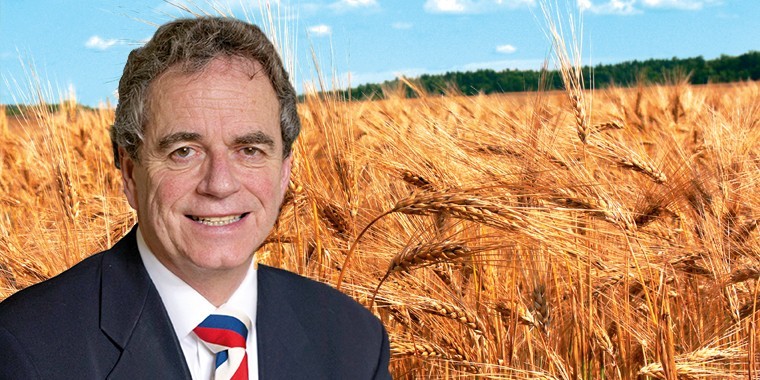When I wrote my last article at the end of November, UK wheat had already hit its peak on the May futures of £244 in store and it was beginning to fall away as the first warning clouds of the Omicron Covid-19 variant were appearing.
Since then, £20 per tonne has haemorrhaged from the wheat market. Most of this fall has been caused by non-grain market events. I mentioned the spectre of “demand destruction”; as this new variant has spread, so the levels of fear have also spread among the global hedge funds. They have been bailing out of long commodity positions but also out of equities and oil, which have taken a big hit.
This was exacerbated by the US Federal Reserve announcing that inflation was here to stay. It forecast that interest rates would be increasing on a regular basis over the next three years. This was coupled with their intention to stop or taper down the support they had been giving to the equity and financial markets in terms of buying in Government bonds, which facilitated quantitative easing or the printing of new dollars.
Faced with this, the hedge funds quickly moved to a “risk off” position which meant selling futures, shares and equities. The US dollar also fell in value. The US Federal Reserve would have been doing some of this anyway to control inflation.
The latest Covid-19 outbreaks happening at the same time have made everyone more worried about the effects of another major lockdown and what it would do to our economy. So, all world grain futures also took a big hit, but by mid-December the USA CBOT had recovered about half of its losses whereas the UK and French futures had not.
As often happens, the USDA added a bit more bearish news by suggesting that world wheat production has increased by 2.6m tonnes and that, despite its harvest weather problems, Australians are talking about another 2m tonne increase as well. That’s irrelevant as they don’t have the port or logistics capacity to export any more.
At home, as I have predicted many times, barley has become more difficult to sell to compounders as wheat has fallen by £20 per tonne. But it is still at amazing price levels. The UK has now confirmed the crop size at 6.96m tonnes, so the surplus still remains at up to 1.3m tonnes of feed and malting barley.
Less than half had been exported by the end of December, so my constant advice is to keep selling it – you may not see the like of this feed barley price again. Malting barley is still commanding huge premiums. It really should be a criminal offence for a malting barley grower to allow his barley to go out of condition because of high moisture or bugs with such enormous premiums at stake.
Repeating what I have said before, imported maize will still have a big part to play in the UK/EU feed wheat and barley markets. The removal of the 25% tariff on US maize imports has not opened the flood gates yet.
There are ‘special event’ conditions which could allow EU compounders to use US maize, albeit potentially being genetically modified. This involves the identification of some varieties which are non-GMO; well good luck with that one. I expect if feed wheat and barley remain at current levels, a way to use cheaper US maize will be found, GMO or not.
The UK wheat crop has also been confirmed at 13.9m tonnes. With the already known exports (providing we don’t have a national lockdown causing demand destruction), I reckon we will run out of wheat by April, so imports will be required.
So, I hold to my long term view, that if it happens, the change from export to import parity will add £15 to whatever the ex-farm price of UK wheat is. So, while you have had ample opportunity to sell your wheat at better money than it is today, hold it now if you can for the late rally, but please cash in your barley.
I think the last harvest has turned out to be a lot better than anyone could have budgeted for. Even with average yields, some will have received the equivalent of one and a half times their expected income from grain sales – well done.
I hope your new year has started in a healthy and happy way.




